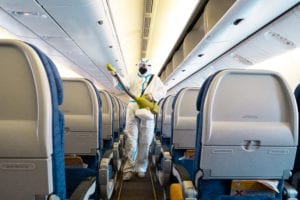By Gary Frazier
With more than 135 million people in the U.S. fully vaccinated so far, the summer travel season is expected to be far more active than last year. Starting with Memorial Day Weekend, which saw the highest number of travelers since COVID-19 began, consumer confidence in the safety of vacationing once again is bound for steady growth, barring some unforeseen COVID-related setback.
Many travelers who would usually take international excursions likely will keep their adventures within U.S. borders this summer, meaning our already-popular National Parks (some of which had a booming 2020) and other tourist destinations will be inundated with more cabin-fevered sightseers than usual. But that doesn’t mean international travel is off the table for American citizens; previous bans on travel from the United States into foreign lands, specifically in Europe, are on their way to being rolled back for vaccinated visitors.
However, the coronavirus isn’t yet fully behind us, if it ever will be. New variants continue to emerge and rapidly spread, dozens of foreign countries (including many popular tourist destinations) remain in the Centers for Disease Control and Prevention “very high” COVID-19 risk level, and outbreaks have (albeit rarely) been reported even among clusters of vaccinated people — just look at what happened to the New York Yankees. We might be in a more optimistic phase of the pandemic than a year ago, but travel still comes with plenty of caveats, and COVID-19 testing is still as crucial as ever to keeping things moving in our country and around the world.
If you plan to hit the open road or skies this summer, be mindful of the mandates and restrictions in place for your destination and return, the risks of venturing out, and the resources to help keep your vacation safe and smooth.
Know the requirements
While domestic travel might be easier for U.S. citizens this summer, there are several important things to keep in mind.
For one, travel restrictions are in place in certain states, including a few popular summer spots. Hawaii is perhaps the most protective and strict U.S. travel destination when it comes to COVID-19; the state requires each traveler to test negative within 72 hours of their arrival, a process in which (as I’ve written about before) Worksite Labs has proven elemental.
What you may not know is that a handful of other states and territories including Massachusetts, Puerto Rico, Rhode Island and Vermont — all of which draw considerable summer crowds — have restrictions very similar to Hawaii’s. Other states and cities have highly variable restrictions depending on where you’re coming from: Chicago, for instance, has designated different requirements for inbound travelers coming from “orange” or “yellow” states depending on those states’ respective health situations.
Regardless of where you’re headed in the U.S., the CDC highly encourages domestic travelers to get fully vaccinated and wait two weeks after inoculation before taking a big trip. Unvaccinated travelers should receive viral COVID-19 tests soon before and after their trip, and should self-quarantine for a week after arriving home, even if they receive a negative test.
International travel is, of course, a whole other ballgame. The CDC continues to recommend that unvaccinated U.S. citizens not venture outside our borders, but even vaccinated travelers are subject to a set of requirements both for arriving overseas and returning to America.
Though restrictions on international travel are indeed loosening — the European Union, for instance, is on the cusp of permitting vaccinated American tourists after a strict, year-plus-long no-entry policy — requirements for inbound travelers still vary from country to country, sometimes day by day. Stay on top of those requirements by checking the U.S. Department of State’s COVID-19 Country Specific Information page.
As for returning home, even vaccinated citizens are required to have a negative COVID-19 test result no more than three days before their return journey. The CDC also asks that people returning to the states get a viral test three to five days after arriving home, as well as self-monitor and keep tabs on state and local health recommendations.
Know the risks
COVID-19 testing remains an essential part of keeping the travel industry moving because, like it or not, health risks are still out there — even on our own soil.
Yes, the vaccine is effective at keeping you from getting COVID-19 (and reduces the severity if you do catch it), but how well it prevents spread of the virus that causes COVID-19 is still up in the air for the CDC. It also appears to vary by vaccine brand. In the case of the Yankees’ “breakthrough” infections, the team was reported to have received the Johnson & Johnson single-dose vaccine, which is 100% effective at preventing serious illness but only 66 to 72% effective at reducing COVID infection. With other vaccine brands, the CDC says it is “still learning” how well they halt spread of the virus.
What that means: Just because you’re vaccinated, you still can spread the coronavirus. And as new variants continue to pop up around the globe, international travel remains particularly risky — something the CDC isn’t hesitant to acknowledge. As of May 17, dozens of countries remained at the CDC’s “Level 4” of COVID-19 risk assessment, with the agency deeming the health risk in these countries “very high” and saying Americans “should avoid all travel” to them. These even include countries either currently open for international visitors or plan to be soon, including Italy, Greece, France, even our neighboring Canada.
If you’ve decided to vacation overseas this summer or must travel for work, keep up to date on your destination’s regulations and restrictions, because — as we’ve learned the hard way — a country’s health status can turn deadly on a dime. Of note, the European Union recently recommended that its countries, as they begin to open borders for non-essential travel, implement an “emergency brake” option: Those countries could “quickly and temporarily” limit travel from heavily COVID-affected countries if the need arises. So, if you’re traveling to a European Union country (or anywhere, for that matter), you can’t go wrong making sure your plane tickets, hotel and vacation rental bookings have a solid cancellation policy.
Know your resources
Clearly, reliable and efficient COVID-19 testing is the only way to keep travelers assured they remain healthy and safe as they take their summer trips. That’s where Worksite Labs comes in, providing on-site PCR testing labs that will turn around 98 to 99% accurate results within 24 hours of taking a nasal swab sample. Our services are available at an ever-expanding list of major American airports, including those in San Francisco, Seattle, Austin, Los Angeles and very soon New York and Miami. And now, pre-travel testing is even more of a breeze thanks to our partnership with “health passport” brands AOK Pass, Clear and CommonPass.
The process is simple: Travelers receiving their pre-travel tests through Worksite Labs have the test results sent automatically to our partner’s app, and, with a few taps, users can present a QR code to the airline or other entity with which they’re traveling. Our pilot program with Clear and CommonPass has already helped U.S. travelers on their way to Fiji, and starting this month it is being offered to travelers headed to Hawaii, later expanding to flights to Aruba and London. In addition, our partnership with AOK Pass is slated to aid travelers to Thailand.
While travel within and outside the United States still carries its share of caveats, Worksite Labs can carry you to your destination, be it domestic or across the pond, with its growing set of accommodations. If you’re determined to take your dream vacation this summer after a year of sheltering in place, you deserve to know you’re doing so as safely as possible — and that’s why we’re here.
Gary Frazier is CEO of Worksite Labs.




